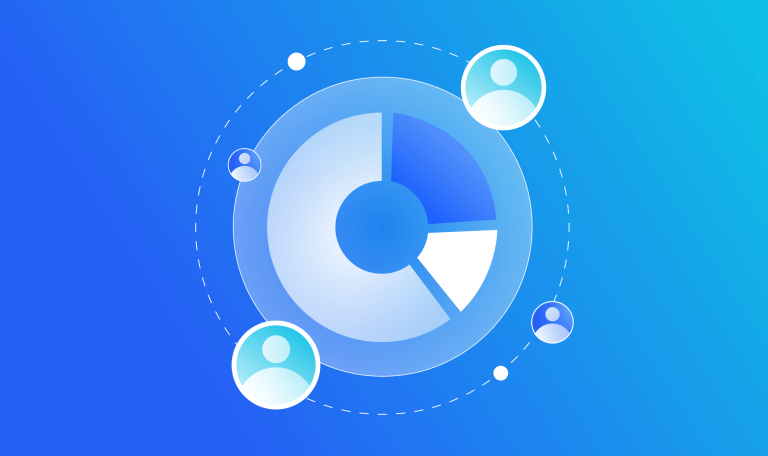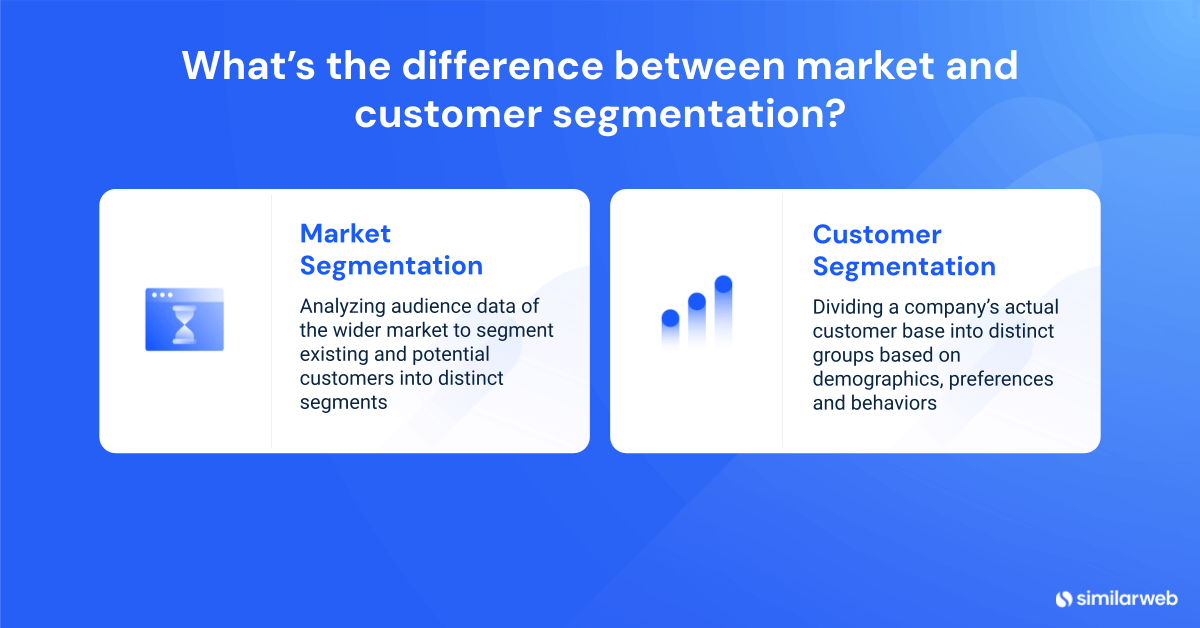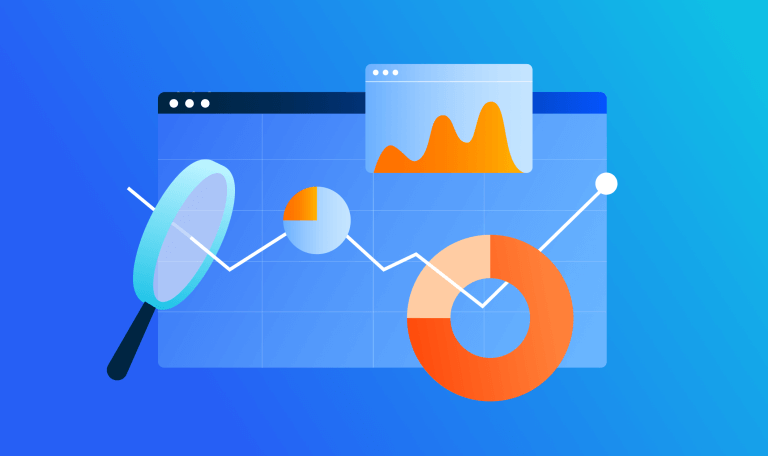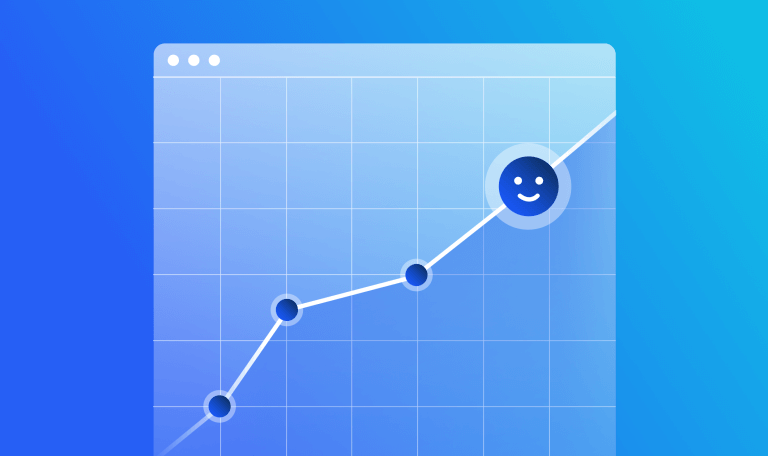Customer Segmentation: Expert Tips on Understanding Your Audience

The bottom line when it comes to customer segmentation? Personalization 🎯
Picture this: you go to your favorite coffee shop and are greeted with a smile, your name, and your usual order ready to go. This simple yet powerful gesture instantly makes you feel valued and understood.
Customer segmentation is the secret to helping businesses capture similar moments of personalized interaction, but on a much larger scale.
Dividing a target audience into groups is a way to understand their diverse needs and preferences better, so you can forge deeper connections with them (and drive loyalty and sales).
So, let’s dive into the world of customer segmentation so you can learn the art of creating key moments of connection with your customers – with a little help from Similarweb’s audience segmentation tools along the way.
What is customer segmentation?
Customer segmentation involves dividing a business’ customer base into groups based on specific criteria or characteristics. This could be based on things like:
- Where they live
- Demographics (i.e. age, gender, occupation, income)
- Unique needs
- Purchasing habits
- Psychographic traits (i.e. personality/character traits)
When a business gets to grips with the different facets of its customer base, it can tailor product assortments and marketing strategies to better meet the unique needs and preferences of each sub-group. This type of personalization drives customer satisfaction, which in turn increases loyalty, advocacy, and sales.
What is customer segmentation analysis?
So, how exactly do you slice and dice customers into groups? With customer segmentation analysis.
This is the process of closely examining the distinct segments within a customer base by analyzing certain data (personas, behaviors, characteristics, etc.) and putting them into meaningful groups.
When done right, customer segmentation analysis can reveal key patterns and customer trends that may have slipped under the radar, as well as other data-driven insights to improve the customer experience. The data collected is also great for informing marketing strategies and product development and improving customer service.
Customer segmentation vs. market segmentation
Simply put, customer segmentation focuses on dividing up a business’ customer base into groups, while market segmentation is a much broader concept that focuses on segmenting an entire market into smaller categories—which includes potential customers, too.
While essentially they both divide their customers/market segments into groups based on specific criteria, the key difference is their scope and application.
Customer segmentation tends to be far more granular, focusing on much more detailed customer data surrounding behaviors, preferences, buying patterns, and audience demographics.
Market segmentation looks at the entire market and may focus on broader categorizations like geographic location, socio-economic status, psychographics, and behavior patterns. There is likely a lot of crossover between the two when it comes to the categorization criteria.
So, while customer segmentation zeroes in on optimizing relationships with customers, market segmentation provides an important strategic overview of the full market landscape to ensure businesses capitalize on broader market opportunities and trends.
Benefits of customer segmentation
There’s a reason why personalization is all the rage – it helps to drive customer engagement, brand loyalty, and satisfaction. But let’s dive into some key advantages of customer segmentation.
The process of customer segmentation can help you:
1. Understand your customers like never before 🤝
When you spend time analyzing your customers’ unique characteristics, preferences, behaviors and needs, you get to know your target audience on a much deeper level. This understanding helps you communicate with them in a way that truly resonates with them, helping to build long-lasting relationships
2. Improve customer retention rates 📈
Holding on to customers should probably be at the top of your priority list, as it’s much easier – and cheaper – than acquiring new ones.
So it’s important to know that when a customer feels like your products and marketing meets their specific needs, they are much more likely to come back. In fact, it’s thought that 52% of customers will go out of their way to buy from their favorite brands.
3. Make the most of your marketing budget 💰
When you know where and when to focus your marketing efforts, that’s a lot less money down the drain. You’ll allocate your resources much more efficiently and invest more heavily in higher-value customer segments – sending that ROI figure through the roof.
4. Enable personalized marketing 🧒
This one’s a no-brainer. The insights you gain from analyzing customer data allow for super-targeted, personalized marketing campaigns. We’re talking personalized email campaigns, product recommendations, and offers that will hit the bullseye every time, increasing engagement levels and conversion rates.
5. Take product development up a few notches 📱
Getting to grips with the unique needs and preferences of each segment of your target audience can have a pretty positive impact on product development. You’ll be able to tailor products that you know they’ll love, improving product-market fit and, of course, making your customers very happy. Also – don’t forget to analyze your competitors’ products for extra insight!
6. Gain a competitive advantage ✅
When you meet the needs and expectations of your customers better than your competitors, you’ve immediately differentiated yourself in a fiercely competitive market – which is no easy feat. This will result in increased market share and an onslaught of loyal customers and brand advocates.
7. Make data-driven decisions 🗃️
The data-driven insights you get from customer segmentation can inform strategic decision-making across the entire business, from marketing and sales through to product development and customer service.
8. Put some sparkle in the customer experience ✨
Customers can be fickle creatures. It’s thought that 50% will switch to a competitor after just one unsatisfactory customer experience. Plus, good customer experience is just generally great for your bottom line: businesses that focused on improving the customer experience saw an 80% increase in revenue.
That’s why the personalized interactions and tailored experiences made possible by customer segmentation can make all the difference to the customers, and have a huge impact on their decision to become repeat buyers.
Types of customer segments
Demographic segmentation
Demographic segmentation involves dividing customers based on demographic factors like age, gender, income, education, and occupation. For example, a luxury brand might target high-income individuals, while a children’s toy business would focus on parents with young children.
Geographic segmentation
This type of segmentation is based on customers’ geographic locations, such as the country they live in, or their specific region, city, or neighborhood. Geographic segmentation is particularly useful for businesses with location-specific products or services.
Behavioral segmentation
Behavioral segmentation occurs when customers are grouped together based on how they behave, such as purchasing habits, brand loyalty, and product usage. For example, a business might target frequent buyers with loyalty rewards programs.
Psychographic segmentation
This involves dividing customers based on their personality or character traits—how they choose to live their lives. This can be their lifestyles, values, interests, and attitudes. For instance, a health-conscious brand might target individuals who prioritize wellness and fitness.
Technographic segmentation
This type of segmentation groups customers based on their technology usages, preferences, and behaviors. For example, which devices, software, and applications they use the most, and how tech-savvy they are. This is mostly useful for high-tech or software companies that want to target tech-savvy customers that are more likely to adopt the latest technologies.
Needs-based segmentation
This is an approach that requires a deep understanding of customers’ pain points and how the businesses’ products can solve them. For example, a skincare brand might group its customers based on specific skin care issues, like acne, sensitive skin, or aging, to offer the most relevant products.
Value-based segmentation
This type of customer segmentation focuses on how much value, usually economically, a customer will bring to the business. This usually involves identifying high-value prospects that will generate more revenue and prioritizing resources toward these segments.
Customer segmentation examples
Let’s look at some well-known brands that have absolutely nailed customer segmentation, and how they have applied different types of segmentation to achieve success:
1. Spotify
How Spotify segment their audience:
- Behavioral
- Psychographic
Why this works:
We couldn’t write a blog on customer segmentation without mentioning Spotify – the Queens of personalized content. They offer a range of super personalized, curated playlists to listeners year-round—for example, ‘Discover Weekly’ and ‘Release Radar’ – by analyzing the listening habits, playlist preferences, and demographics of their users.
However, it’s Spotify’s much-anticipated annual ‘Wrapped’ campaign that is thought to be one of the most successful in the 21st century. At the end of each year, Spotify users get a highly personalized summary of their listening habits over the past year, including their top artists, songs, and podcasts.
Source: Scribly Media
Like with the curated playlists, these customer insights are gleaned from their listening patterns and favorite genres (even the most niche micro-genres!). And, as people love to show off their musical tastes, the real genius is in its shareability, as graphics of their yearly summaries can be shared on social media in just a few clicks.
This campaign has been a huge driving force behind Spotify’s user growth. For example, in 2021, nearly 60 million Wrapped stories were shared, and between 2020-21, there was a whopping 461% increase in tweets about Spotify Wrapped. Also, at the end of each year, there’s a notable spike in Spotify’s app store rankings, as users are eager to access and share their summaries.
Check out the traffic trends to Spotify over the last 3 years:
Here you can see there is a spike in traffic in December each year, which quickly drops back down in January.
There’s also a noticeable spike every March, which could be attributed to Spotify’s Stream On campaign, geared more towards creators and artists rather than listeners, that launches around this time every year. Unlike Wrapped, this campaign is a result of segmenting their audience based on their professional interests and roles within the music/audio industry.
2. Apple
How Apple segment their audience:
- Behavioral
- Psychographic
- Demographic
Why this works:
By segmenting customers based on usage patterns, preferences and demographics, Apple is able to create tailored product offerings and laser-focused marketing campaigns. For instance, the iPhone lineup includes models for budget-conscious consumers as well as high-end users seeking the latest technology. Additionally, Apple targets education sectors with its iPad and Mac products, offering special pricing and features suited for students and teachers.
Apple’s ‘Shot on iPhone’ campaign was an excellent example of customer segmentation. It targeted tech enthusiasts and professional photographers as well as more casual users—basically anyone who had a passion for photography.
By segmenting their audience based on occupation and interests, they were able to showcase a range of stunning photographs taken by real users of the iPhone, while demonstrating their new high-quality camera features and mastering the art of visual storytelling. The campaign also included localized content that appealed to different markets around the world.
Source: Medium
3. Netflix
How Netflix segment their audience:
- Geographic
- Behavioral
- Psychographic
Why this works:
Netflix uses sophisticated customer segmentation to provide a high level of personalized content recommendations. They do this by analyzing vast amounts of their audience’s viewing habits, genre preferences, and user ratings to suggest shows and movies that align closely with individual tastes. This approach not only enhances the user experience but also keeps viewers engaged and subscribed.
Netflix also segments their market geographically, offering localized content to cater to regional preferences and cultural nuances.
For example, Netflix introduced the “Play Something” feature in 2021 to help users out when they don’t know what to watch next. This feature targets users who struggle with decision fatigue by offering ‘random’ but personalized recommendations with a single click. It ensures that users always have something new to watch, tailored closely to their unique preferences.
Source: Netflix
How to segment your customers using Similarweb
Now that you know the what and the why of market and customer segmentation, let’s talk about the how.
How can you segment your audience effectively to achieve similar success with your own product launches and campaigns?
Step into the spotlight, Similarweb! ✨
How to segment your market
Similarweb’s Market Analysis feature helps you understand the broader market landscape, allowing you to gauge macro customer demographics, trends and behaviors, and even identify potential customer segments.
Firstly, select the relevant industry – choose from our many pre-defined industries, or create your own custom industry by uploading a list of websites you’re interested in analyzing. For this example, we’ll look at the global Restaurants and Delivery industry.
Step 1: Geography
Under the Geography tool, you can check out the fastest growing countries within your wider industry, so you can see where your customers are located across the globe:
Here, you can see which countries are experiencing the most growth, or have been declining in recent months. For example, the Restaurant and Delivery industry remains pretty stable in the US, but is quickly growing in Japan, UK, India and Canada.
Knowing the geographic distribution of your audience, especially emerging ones, enables you to create targeted, region-specific marketing campaigns. This is particularly useful for localizing content and offers to match regional preferences and cultural nuances.
Step 2: Demographics
Next, check out the Demographics tool, where you can dive into the demographic profile of your market. You can analyze the age and gender of the wider audience, based on the top 100 players in the industry:
It’s clear from this analysis that the largest age group is by far the 25-34s, shortly followed by the 35-44s, suggesting that campaigns should be crafted to resonate mostly with the millennial generation, to ensure your content is as relevant and engaging as possible to this audience.
How to segment your customers
Now that you have an overview of your audience on an industry scale, it’s time to dive deeper into your specific customers using Similarweb’s Website Analysis tool.
Step 1: Geography
Similarly to analyzing the geographical location of major markets within your industry, this tool helps you discover where in the world your actual website visitors are located:
Using DoorDash as an example, we can see that the top locations for the leading delivery service look a little different from what we see on a market/industry scale. While the US is still the top global market for DoorDash, it’s Canada, Australia, and New Zealand that have the next biggest share of traffic to the site.
You can check out the month-over-month (MoM) % change to see whether website traffic to these regions is increasing or decreasing over time, or to spot a faster-growing market to potentially target – like Japan and Mexico with 38% and 52% growth.
Step 2: Demographics
Move on to the Demographics tool to get demographic insights into your website visitors:
Here we can see that the age and gender demographics are very similar to that of the wider market, confirming that these are the strongest customer segments to target.
Fortified with this demographic data, you can tailor and update your website content, product offerings, and marketing campaigns to better suit the preferences and needs of the right customer segments.
Step 3: Audience Interests
Naturally, understanding the behavioral patterns and interests of your website visitors is the key to effective customer segmentation. That’s why we have a dedicated Audience Interests tool to help you discover more about customers’ browsing habits:
This detailed overview identifies the key interests of your website visitors, based on what other industries and topics they are most engaged with.
It seems that DoorDash customers in the US are most interested in Gaming, as well as electronics and technology. You can also study the Topics Distribution for a closer look at what specific topics within those industries are getting their attention.
Why is this data useful? This could spark ideas to incorporate gaming and virtual reality experiences into your products, customer experience, and/or campaigns to take engagement to the next level and drive conversions.
A final word on customer segmentation…
Customer segmentation is a non-negotiable for any brand looking to create personalized experiences that drive customer satisfaction and loyalty.
This data-driven approach helps ensure that everything from your product offerings and marketing efforts through to the customer journey and customer service are geared towards your most engaged audience.
And, as the data experts, Similarweb is fully equipped to help you segment your customers like a pro. 🤜
Our Market Analysis and Website Analysis tools make the customer segmentation process seamless, arming you with key insights into geography, demographics, and audience interests of both the wider market and your specific customer base—so you create targeted, data-driven strategies that hit the mark every time.
FAQs
What is customer segmentation?
Customer segmentation is the process of dividing a business’s customer base into distinct groups based on specific characteristics like demographics, geographic location, purchasing behavior, and psychographic traits. This helps businesses tailor their marketing efforts to better meet the unique needs and preferences of each group, resulting in more effective and personalized strategies.
Why is customer segmentation important?
Customer segmentation is important because it allows businesses to create personalized marketing efforts that enhance customer satisfaction, loyalty, and engagement. When customers feel understood and valued, they are more likely to return and recommend the business to others. Additionally, segmentation helps businesses allocate resources more efficiently, focusing on the most lucrative customer segments to drive higher conversion rates and increased revenue.
What is the difference between customer and market segmentation?
Customer segmentation focuses on dividing a business’s existing customer base into groups based on detailed behaviors, preferences, and demographics. In contrast, market segmentation is broader, involving the segmentation of the entire market, including potential customers, based on criteria like geographic location, socio-economic status, and psychographics. Essentially, customer segmentation is more granular, while market segmentation provides a wider strategic view of market opportunities.
What are the different types of customer segmentation?
Different types of customer segmentation include demographic segmentation (age, gender, income), geographic segmentation (country, region, city), behavioral segmentation (purchasing habits, brand loyalty), and psychographic segmentation (lifestyles, values, interests). Additionally, there are technographic segmentation (technology usage), needs-based segmentation (specific pain points), and value-based segmentation (economic value to the business).
How can Similarweb help me to segment my audience?
Similarweb helps segment your audience through its Market Analysis and Website Analysis features. The Market Analysis tool provides insights into broader market demographics, geographic distribution, and industry trends, helping identify key customer segments.
The Website Analysis tool offers detailed data on your specific website visitors’ locations, demographics, and interests, allowing for precise, data-driven segmentation. These tools enable you to create highly targeted and personalized marketing strategies to maximize engagement and conversion rates.
Track your digital metrics and grow market share
Contact us to set up a call with a market research specialist




















